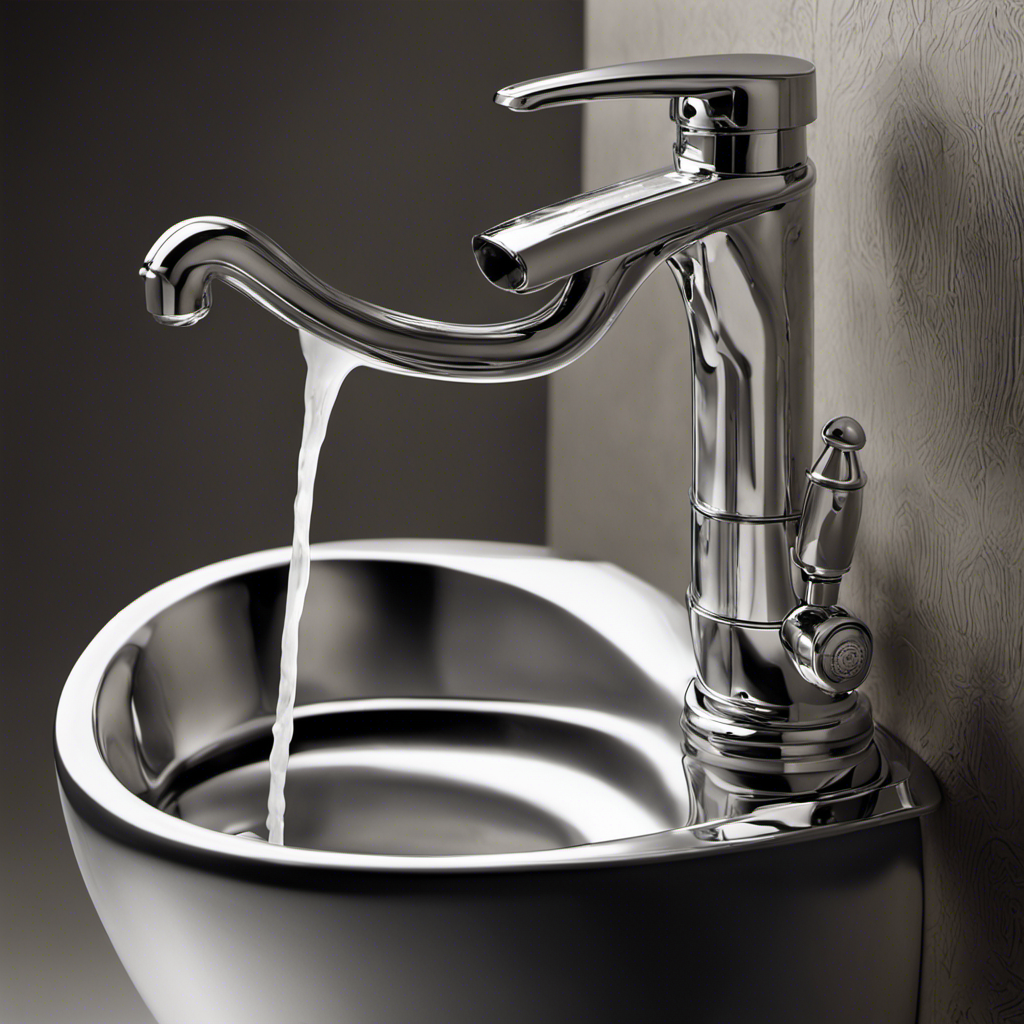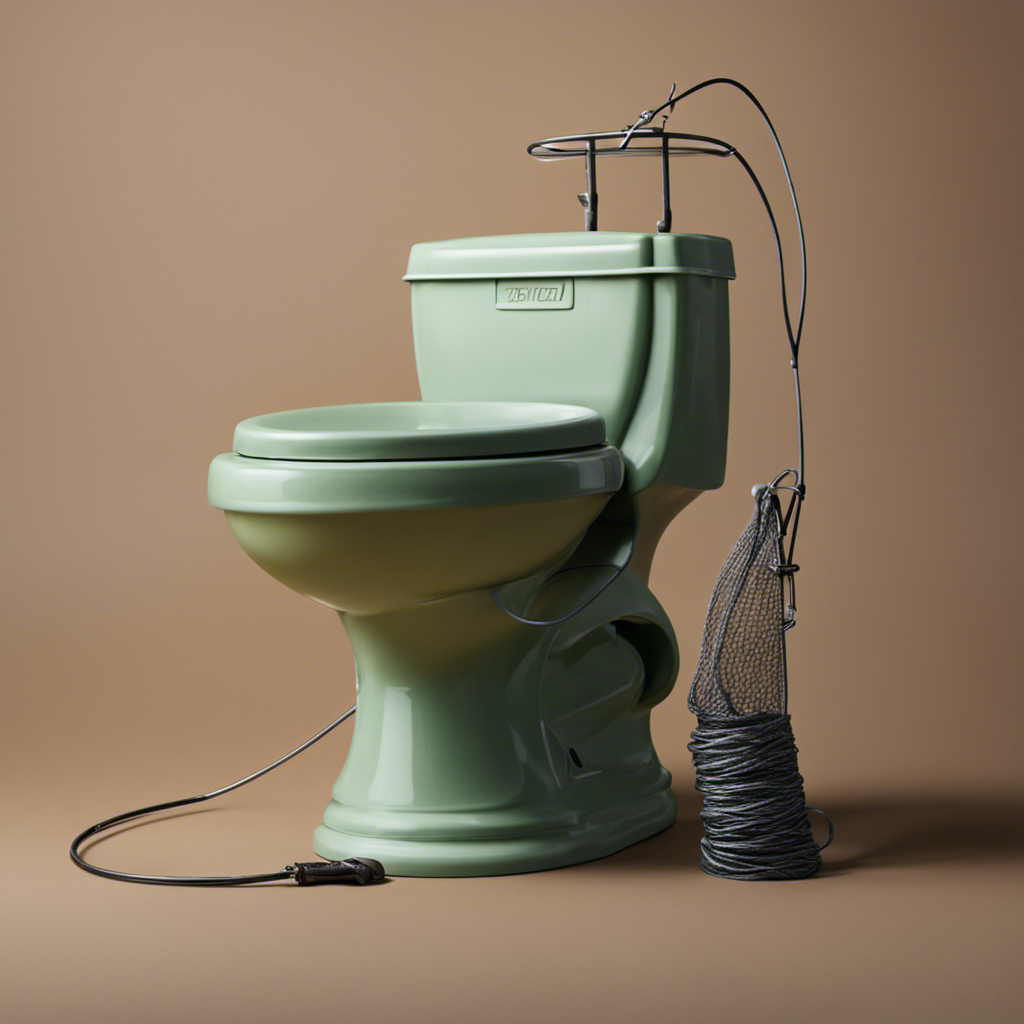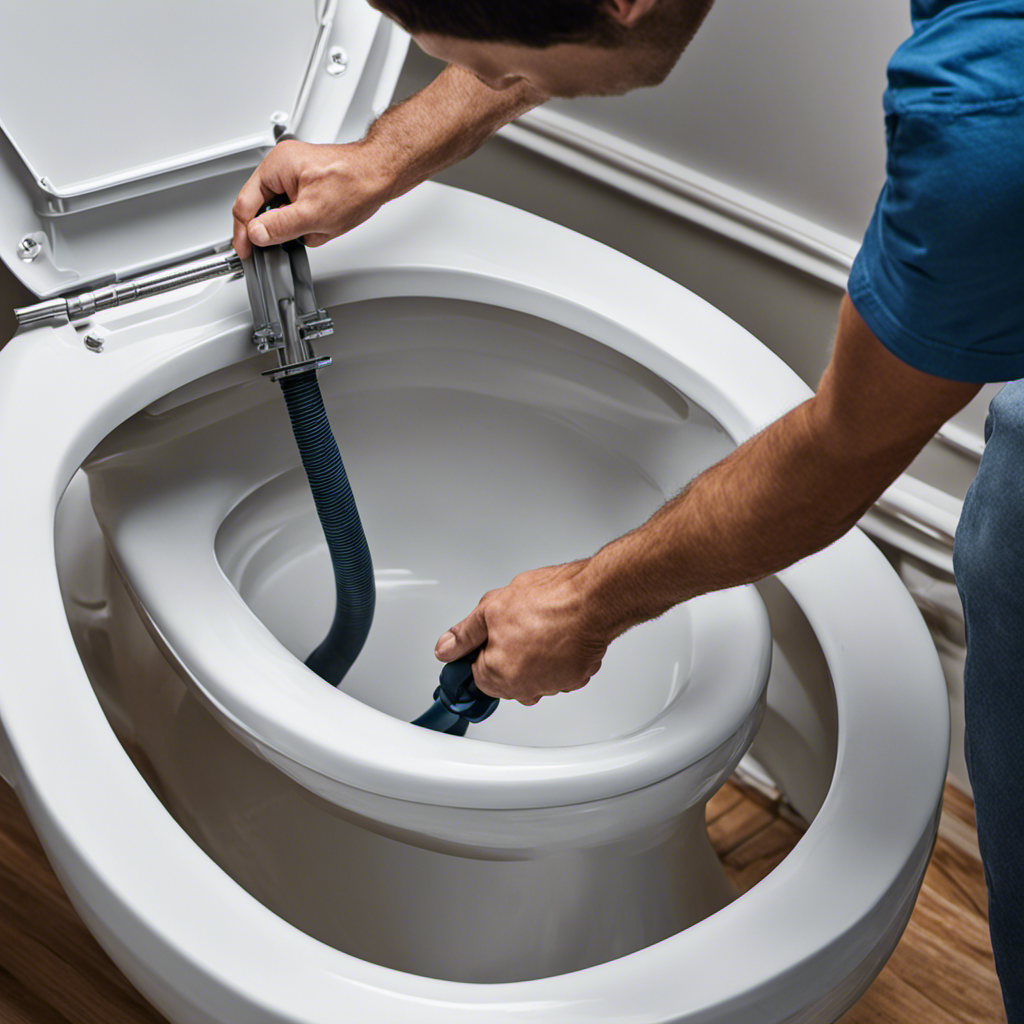You might be thinking, ‘Why do I need to know how to turn off a toilet?’
Well, let me tell you, it’s a skill that can save you from disastrous water leaks and potential damage to your home.
In this article, I’ll guide you through the step-by-step process of:
- Locating and understanding the shut-off valve components
- Turning off the water supply
- Troubleshooting common issues.
So let’s get started and empower ourselves with the knowledge to handle any toilet emergency!
Key Takeaways
- Knowing how to turn off a toilet can prevent disastrous water leaks and potential damage to your home.
- It empowers you to handle any toilet emergency and saves money on repairs.
- Locating the shut-off valve, which is usually found behind the toilet, is crucial for controlling the water supply.
- Understanding the shut-off valve components and properly maintaining them is essential to prevent leaks and ensure a safe and efficient plumbing system.
Locating the Shut-off Valve
The shut-off valve can usually be found behind the toilet. It is a crucial component of the toilet’s plumbing system, allowing you to control the water supply to the toilet.
Proper shut off valve maintenance is essential to ensure its functionality and prevent any water-related emergencies. Regularly inspect the valve for any signs of leaks or corrosion and promptly address any issues.
It is also important to be aware of shut off valve alternatives, such as a main water supply shut off valve for the entire house, in case the shut-off valve behind the toilet malfunctions or is inaccessible.
Understanding the shut-off valve components, including the handle and the water supply line, is vital for effectively turning off the water supply in case of emergencies or repairs.
Understanding the Shut-off Valve Components
Make sure you understand the components of the shut-off valve before attempting to turn it off.
The shut-off valve is a crucial part of any plumbing system, as it allows you to control the flow of water to a specific area, such as a toilet or sink.
It consists of three main components: the handle, the stem, and the packing nut. The handle is what you turn to open or close the valve, while the stem connects the handle to the packing nut. The packing nut, in turn, compresses the packing material to create a watertight seal.
Proper shut off valve maintenance is essential to ensure its functionality and prevent leaks. Regularly inspect the valve for any signs of wear or damage and replace it if necessary.
Turning off the Water Supply
Before attempting to shut off the water supply, make sure you understand the importance of properly maintaining the shut-off valve.
The shut-off valve is a crucial component in preventing water leakage and finding alternative solutions when you need to turn off the water.
To locate the shut-off valve, look behind the toilet near the water supply line. It is usually a small knob or lever that you can turn or lift to shut off the water flow.
It is essential to ensure that the shut-off valve is in good condition and operates smoothly. A faulty or corroded valve may not shut off the water completely, leading to potential leaks.
Testing for proper shut-off will be discussed in the next section, ensuring you have successfully turned off the water supply.
Testing for Proper Shut-off
To ensure the shut-off valve is functioning correctly, you should test it for proper shut-off. There are several testing methods you can use to ensure that the valve shuts off the water flow completely. One common method is to measure the water flow before and after closing the valve. You can use a water flow measurement device to accurately measure the flow rate. Another method is to visually inspect the valve for any leaks or drips when it is closed. Additionally, you can try opening and closing the valve multiple times to check for any sticking or resistance. By using these testing methods, you can ensure that your shut-off valve is working properly and can effectively stop the water flow when needed.
| Testing Method | Procedure | Result |
|---|---|---|
| Water flow measurement | Measure flow rate before and after closing valve | No flow after closing the valve indicates proper shut-off |
| Visual inspection | Check for leaks or drips when valve is closed | No signs of water leakage or dripping indicates proper shut-off |
| Opening and closing test | Open and close valve multiple times | Smooth operation with no sticking or resistance indicates proper shut-off |
Troubleshooting Common Shut-off Valve Issues
If you’re experiencing issues with your shut-off valve, one common troubleshooting step is to check for any debris or sediment that may be causing the valve to stick. Here are some practical steps to help you troubleshoot and resolve common shut-off valve issues:
-
Inspect the shut-off valve: Look for any visible signs of damage or leaks. If you notice any cracks or corrosion, it may be necessary to replace the valve.
-
Clean the valve: Use a soft cloth or brush to remove any debris or sediment that may be obstructing the valve’s movement. Be sure to turn off the water supply before cleaning.
-
Lubricate the valve: Apply a small amount of silicone-based lubricant to the valve stem to help improve its functionality and prevent sticking.
-
Replace the valve: If cleaning and lubrication do not resolve the issue, it may be necessary to replace the shut-off valve. Consult a professional plumber for assistance with this task.
Conclusion
In conclusion, turning off a toilet may seem like a simple task, but it requires knowledge of the shut-off valve components and proper testing for a successful shut-off. By understanding how to locate and operate the shut-off valve, you can effectively stop the water supply and prevent any potential plumbing issues.
Remember, practice makes perfect, so don’t hesitate to troubleshoot common shut-off valve problems. With these steps, you’ll be able to handle any toilet shut-off situation with ease. As the saying goes, "You’ll be in the driver’s seat!" You’ll be able to take control and prevent any further water damage or inconvenience.










